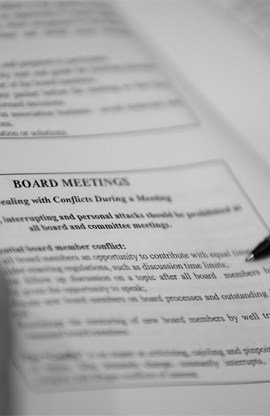Most Planned Community Governing Documents include restrictions regarding the types of permitted vehicles and where those vehicles may be parked/maintained. However, the Arizona Legislature carved out specific exceptions for certain emergency response vehicles. Pursuant to ARS Section 33-1809[1],
- Notwithstanding any provision in the community documents, an association shall not prohibit a resident from parking a motor vehicle on a street or driveway in the planned community if the vehicle is required to be available at designated periods at the person’s residence as a condition of the person’s employment and either of the following applies:
- The resident is employed by a public service corporation that is regulated by the corporation commission, an entity regulated by the federal energy regulatory commission or a municipal utility and the public service corporation or municipal utility is required to prepare for emergency deployments of personnel and equipment for repair or maintenance of natural gas, electrical, telecommunications or water infrastructure, the vehicle has a gross vehicle weight rating of twenty thousand pounds or less and is owned or operated by the public service corporation or municipal utility and the vehicle bears an official emblem or other visible designation of the public service corporation or municipal utility.
- The resident is employed by a public safety agency, including police or fire service for a federal, state, local or tribal agency or a private fire service provider or an ambulance service provider that is regulated pursuant to title 36, chapter 21.1, and the vehicle has a gross vehicle weight rating of ten thousand pounds or less and bears an official emblem or other visible designation of that agency.
- For the purposes of this section, “telecommunications” means the transmission of information of the user’s choosing between or among points specified by the user without change in the form or content of the information as sent and received. Telecommunications does not include commercial mobile radio services.
Based on the foregoing, in order to qualify under the statute, the vehicle owner must satisfy each of the following two (2) requirements:
- The vehicle must be required to be available at designated periods at the person’s residence as a condition of employment; AND
- Either (A) the resident is employed by a public service corporation regulated by the corporation commission, an entity regulated by the federal energy regulatory commission or a municipal utility and, the public service corporation or municipal utility is required to prepare for emergency deployments of personnel and equipment for repair or maintenance of natural gas, electrical, telecommunications or water infrastructure, and the vehicle has a gross vehicle weight rating of twenty thousand pounds or less, and the vehicle is owned or operated by the public service corporation or municipal utility, and the vehicle bears an official emblem or other visible designation of the public service corporation or municipal utility; OR, (B) The resident is employed by a public safety agency, including police or fire service for a federal, state, local or tribal agency or a private fire service provider or an ambulance service provider that is regulated pursuant to title 36, chapter 21.1, and, the vehicle has a gross vehicle weight rating of ten thousand pounds or less, and the vehicle bears an official emblem or other visible designation of that agency.
If your Planned Community encounters a resident who claims this exemption, we recommend (a) requiring that the resident produce documentation that he/she qualifies under the statute (e.g. a letter from the employer); and (b) if the documentation is unclear, contact your community association attorney.
[1] Please note that the Arizona Condominium Act does not have a similar statute, and therefore, this analysis only applies to Arizona Planned Communities.
